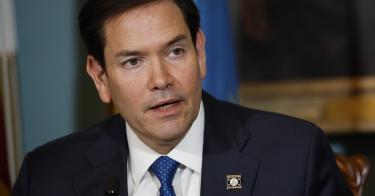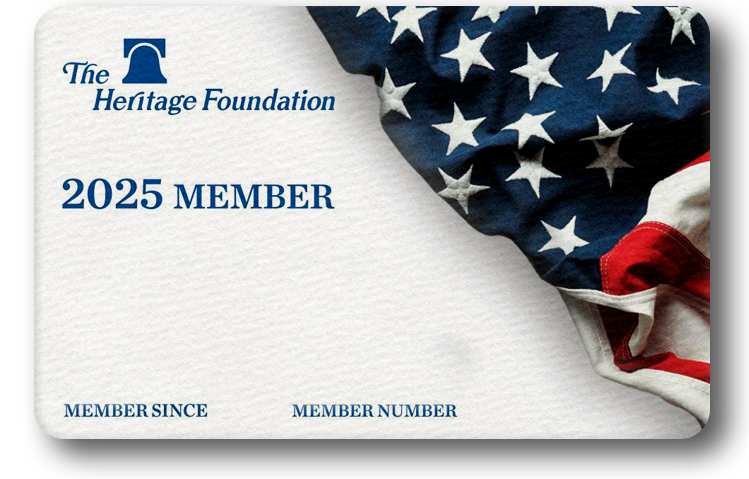Rumors of a major State Department reorganization have been circulating for weeks. Paranoia has been rampant, with leaks and staff panic in online chats, culminating in last Friday’s Politico article: “‘Bonkers crazypants’: American diplomats shaken by reports of possible cuts.” It discussed a “purported order” that called for “slashing state department offices and bureaus.”
The first Trump administration was hobbled by leaks and opposition from career employees fighting a rear-guard action of delay, obfuscation, and (sometimes) feigned incompetence. The second Trump administration isn’t perfect on that score, but it’s certainly learned a lot. Political appointees keep their cards close to their chest and leaks are sometimes strategic rather than inadvertent. This keeps outside observers guessing as to whether they are watching 3D chess or tic-tac-toe.
In the movie Air Force One, the presidential plane had the ability to spew forth “chaff,” or a cloud of particles to throw off incoming missiles. Back when Britain had a significant navy, its vessels used to “make smoke” by burning oil, to obscure themselves from pursuing planes or ships.
Sometimes the Trump team throws up chaff in the form of leaked plans that are so outrageous that they coalesce the Left-wing opposition in outrage, after which the real plan is released to confused disarray. If a pick for a job is unpopular or apparently unqualified, it attracts a media brouhaha that clears the decks for the real pick, who might be controversial but will eventually be confirmed.
>>> DOGE Exposed Our Immigration Asylum Disaster. That Was the Tip of the Iceberg
Politico’s “bonkers crazypants” article seems to be a brilliant piece of chaff, full of nonsense and distracting from the real plan. Marco Rubio, the secretary of state, dismissed all the leaked reports and memos as “fake news,” and it looks like he was right.
Last week, Politico breathlessly reported that the leaked plan “would eliminate the regional bureau devoted to Africa,” the policy planning bureau, the bureau of conflict and stability operations, and the bureau of democracy, human rights and labor. It would replace regional bureaus with “four new diplomatic ‘corps’ on Eurasia, the Middle East, Latin America and the Indo-Pacific.”
Politico said the mystery guy they got their memo from “couldn’t confirm when it was drafted, by whom, or how it pertained to the Trump administration’s final reorganization plan.” When the actual plan came out, Politico ate crow and said it “does not go as far as versions previously reported.” Indeed.
When the real plan dropped on Tuesday, one had to study the organization chart carefully to see what, if anything, had changed. All the regional bureaus (Africa, Europe, South and Central Asia, etc.) were still there. policy planning was still there. A few specialist offices had been moved to more logical locations; for instance, the bureau of counterterrorism was moved from political affairs to arms control and international security, which makes sense.
Most of the deletions—offices disbanded—were redundant, useless, or easily absorbed elsewhere. All the work of the office of global women’s issues, for example, was likely already duplicative of the efforts of more than one other bureau. Its employees can be reassigned to those offices. Likewise, conflict and stabilization operations could easily be absorbed into the renamed arms control, non-proliferation, and stability bureau.
As for the office of diversity and inclusion, conservatives such as myself have long argued for the elimination of offices and personnel focused on DEI and other pointless diversions from important foreign policy goals. The office of civil rights has handled the modest number of employee complaints for decades and can capably do so in future.
>>> NPR and PBS’s Impending Reckoning With DOGE
However, there were some real changes to the structure. The bureau of democracy, human rights, and labor will be folded into a new office of foreign assistance and human rights. Mr. Rubio explained that the “J” under-secretariat under which it formerly came “provided a fertile environment for activists to redefine ‘human rights’ and ‘democracy’ and to pursue their projects at the taxpayer expense.”
The bureau of population, refugees, and migration, Mr. Rubio added, “funneled millions of taxpayer dollars to international organizations and NGOs that facilitated mass migration around the world, including the invasion on our southern border.” Making those two errant offices more responsive to presidential authority is unavoidable if Donald Trump and Mr. Rubio are to re-take control over foreign policy from the mandarins.
State’s restructuring plan calls for reductions of 15 per cent to permanent staff, which will be painful in places. But compared to reports of more drastic cuts only a week ago, this seems achievable without blunting the effectiveness of American foreign policy. No one who has worked there could honestly pretend that there was no fat and redundancy in the department after many years of expansion.
In announcing the changes, the state department said further decisions about foreign embassies and coverage abroad were yet to come. We will no doubt read breathless accounts of promised horrors to come, but after this damp squib, we should take them with a pinch of salt.
This piece originally appeared in The Telegraph




